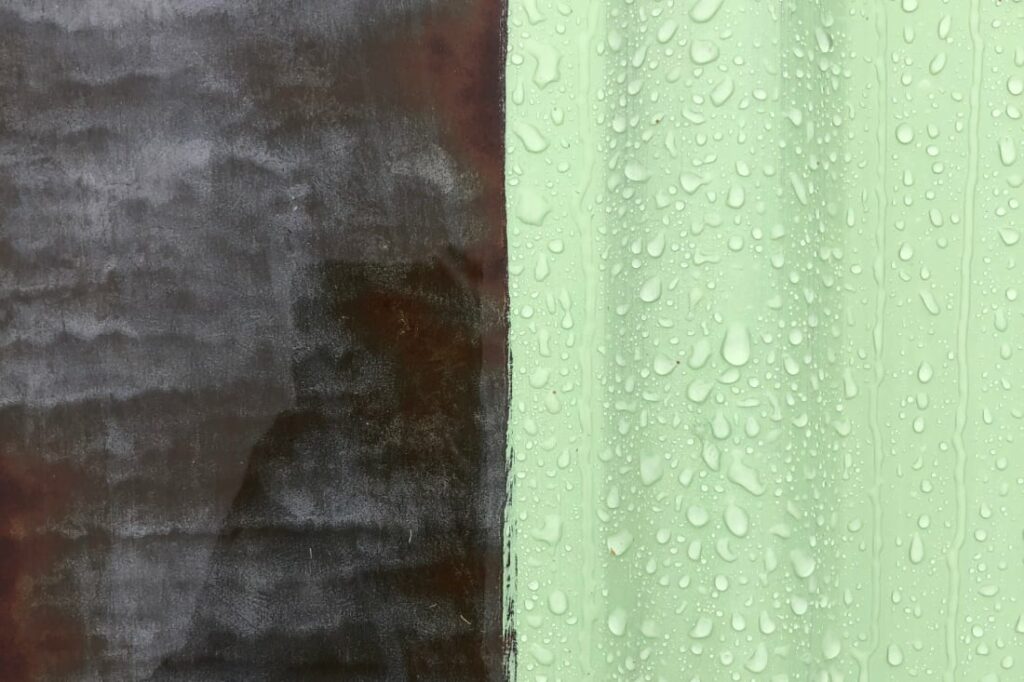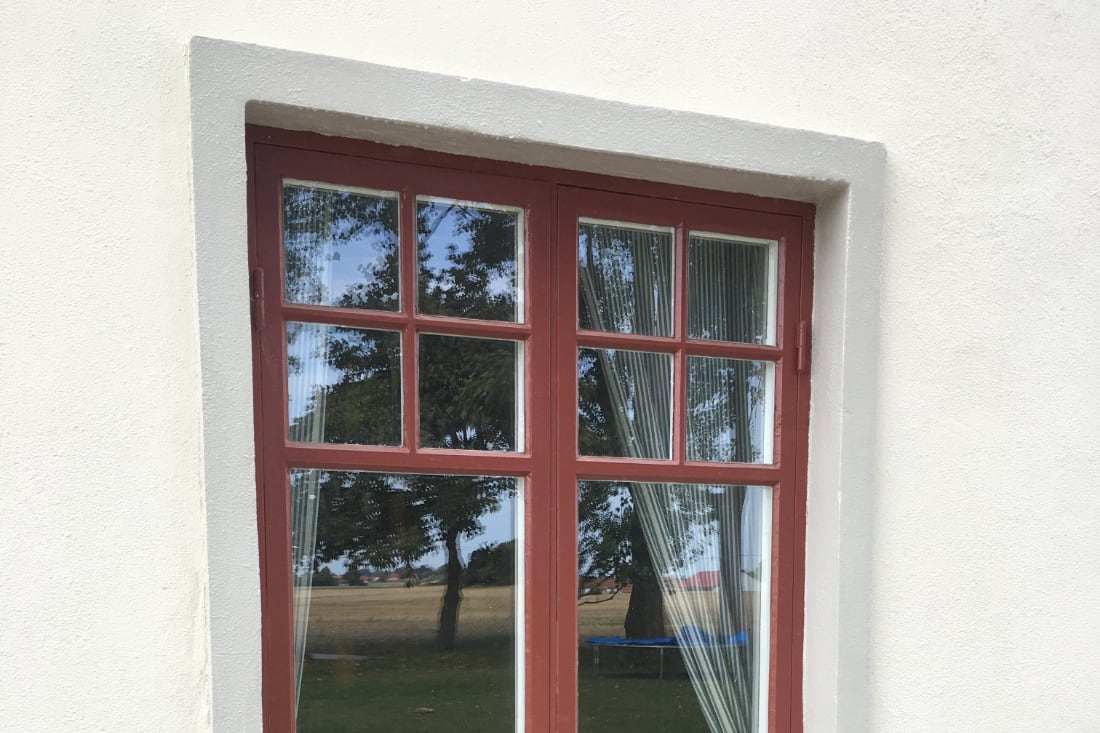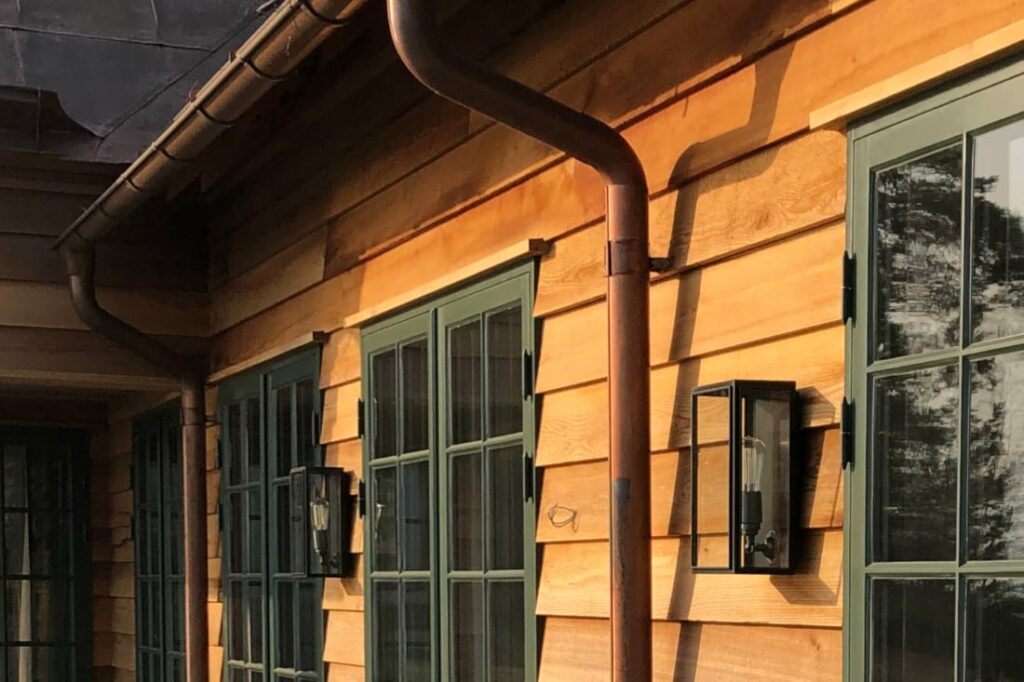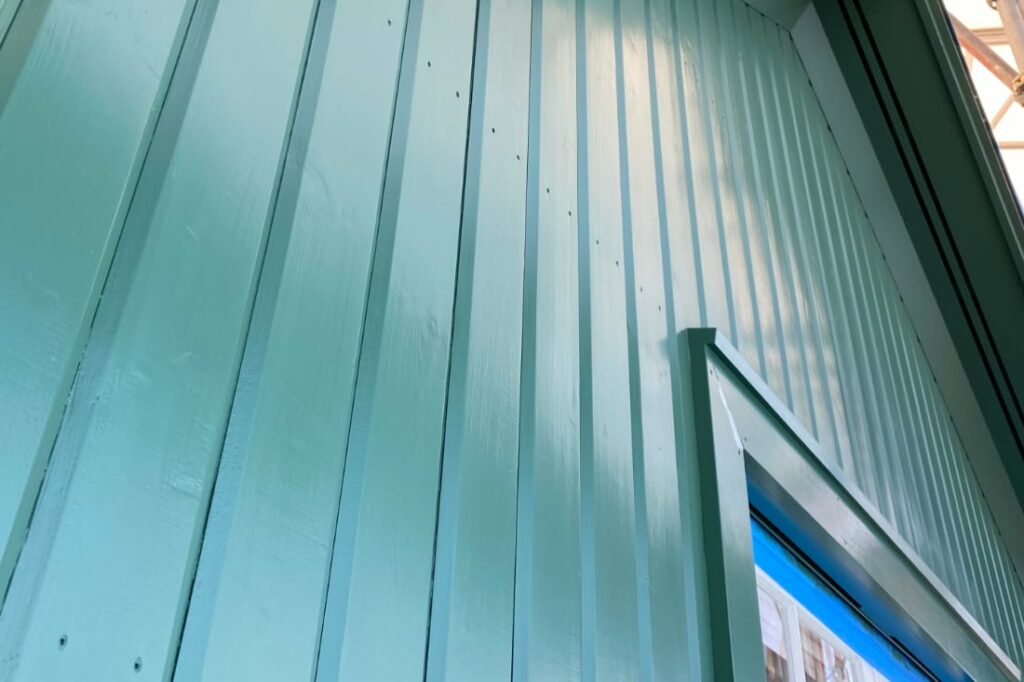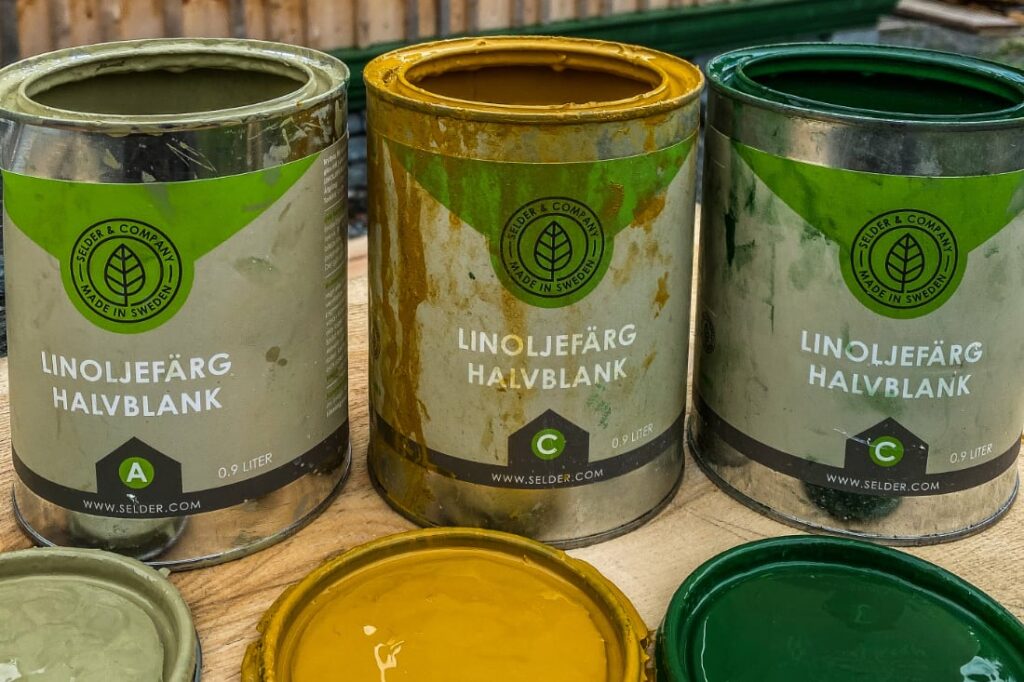Linseed oil paints
Linseed oil paints
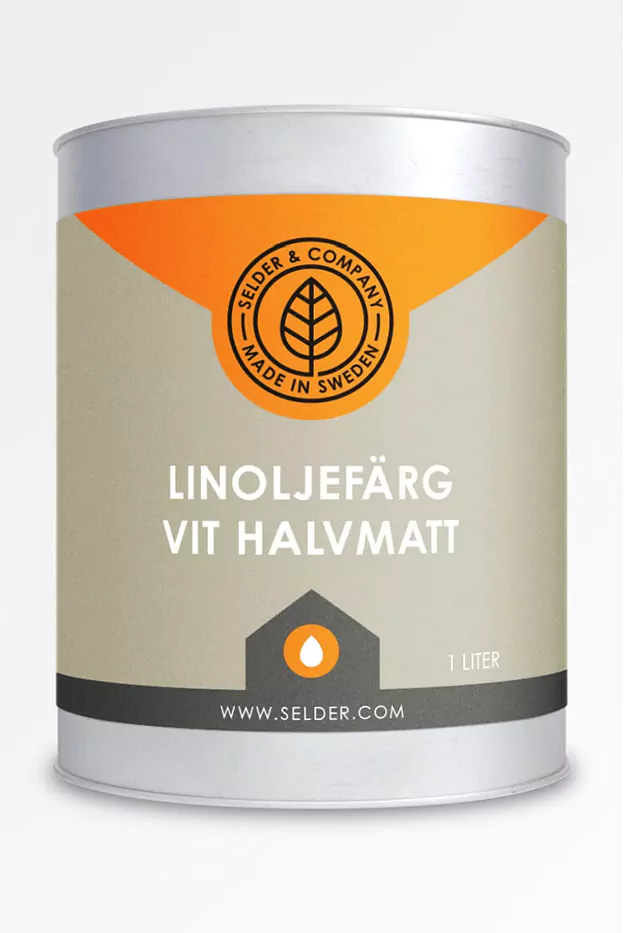
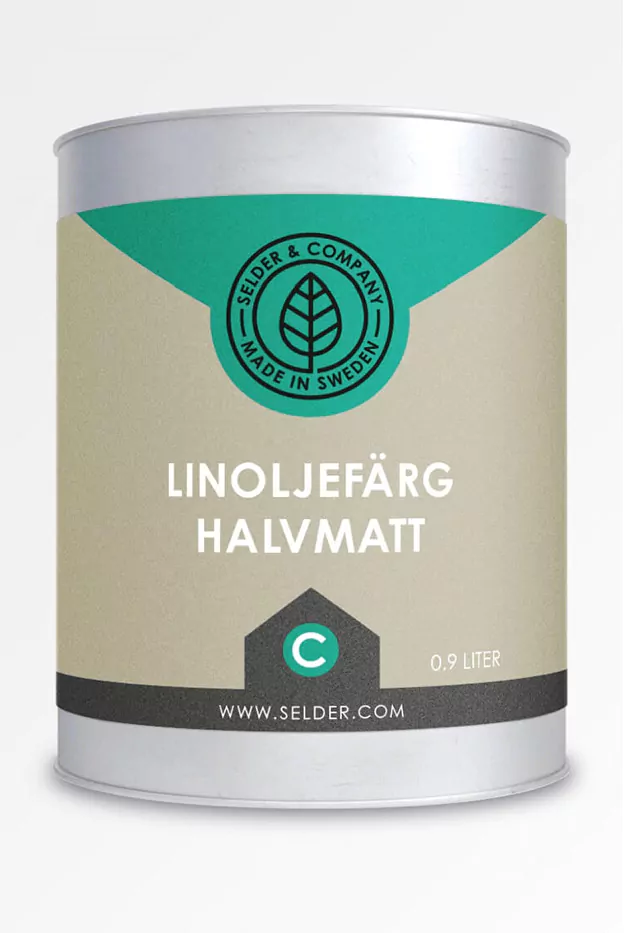

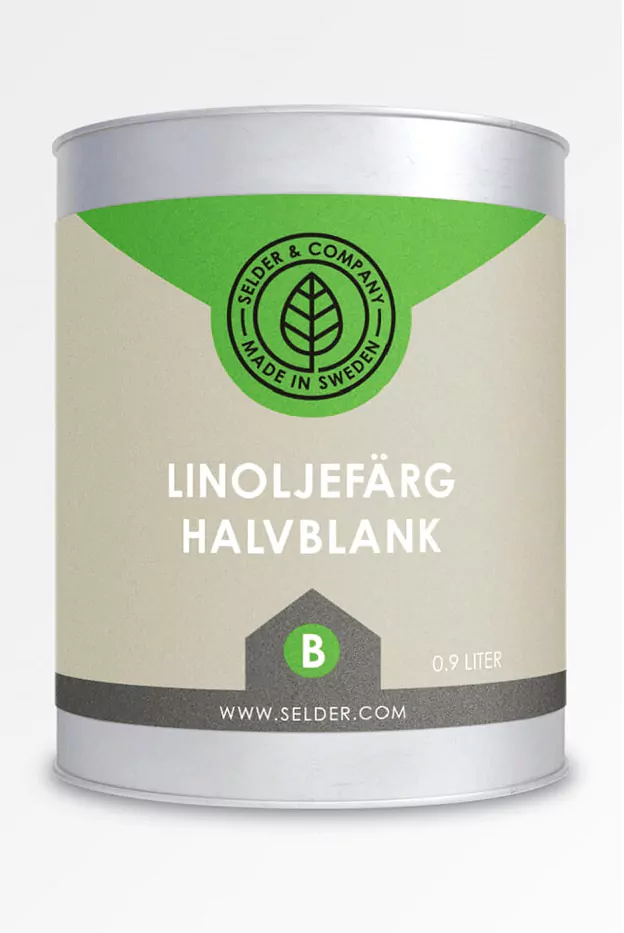
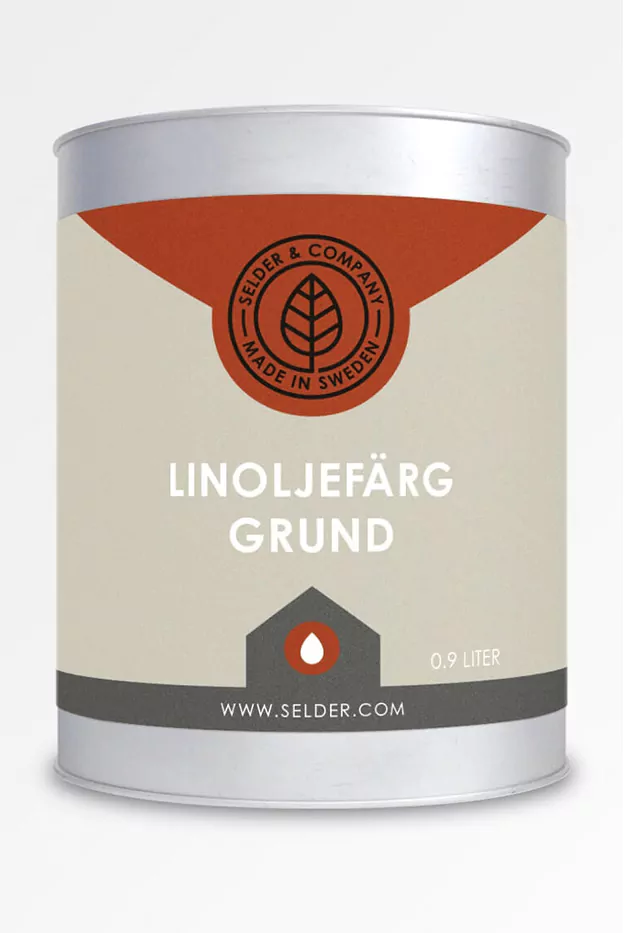
Video: Interiörmålning med Selder linoljefärg.
Video: Mikkel Selder berättar om hur vi gör linoljefärger av toppklass.
Unique linseed oil paints produced
of tradition
Selder manufactures a modern linseed oil paint that does not renounce tradition.
We manufacture linseed oil paint which is zinc-based. Base color, semi-gloss and semi-matt finishing paint, white and A-, B- and C-base for refraction with certified and modern pigments.
Linseed oil paint dulls over time because the linseed oil is broken down by UV radiation. This is usually first visible on the south side where the hours of sunshine are longer and it is more visible on dark colors than on light ones. That the linseed oil paint becomes dull outdoors is natural and nothing that requires action other than for reasons of appearance. The linseed oil that has penetrated the wood still protects.
Synthetic paints retain their color longer than linseed oil paint, because it is not degraded by UV radiation. On the other hand, the linseed oil paint’s original color comes back by ironing on a thin layer of linseed oil.
If you choose linseed oil paint, be prepared that it requires maintenance to stay fresh.
The colors are broken into the desired NCS, RAL, RAÄ and our own colors on modern machines that use our breaking system. This makes us different from other linseed oil paint manufacturers. Thanks to this, we have fast deliveries of broken paint.
The colors are painted:
- outdoors and indoors, on most surfaces – from wood to metal
- usually one coat of primer and two coats of final coat.
- with brush, sprayer or roller.
- to covering layers. One liter of paint then covers 8 – 14 m² per coat depending on the substrate and each dried paint layer is 70 – 120 μm (0.07 – 0.12 mm) thick.
The colors dry in less than 24 hours at 20 °C and good ventilation.
The white colors are packaged in 0.5-, 1- and 5-liter cans, the base color and the breaking bases in 0.45, 0.9 and 4.5-liter cans to leave room for breaking paste.
Durable and mould-free
The colors contain a lot of pigment – one brushstroke of color covers a large surface. Despite this, the viscosity of the colors is optimal as the pigment is extremely finely distributed.
The binder – linseed oil from which the non-drying components have been removed using our unique refining method – is non-biodegradable and water-repellent. It penetrates the substrate and dries through a reaction with the oxygen in the air to linoxin, a natural polymer with good adhesion. Read more under TECHNOLOGY.
Our linseed oil paints penetrate the substrate and breathe. The linseed oil paint lets water vapor through but not liquid water, so it won’t flake.
Easy maintenance
Our paints age because the molecular chains in the polymerized binder are slowly broken down by UV radiation. When this happens, after a couple of decades in shady locations in the north, down to after a few years in sun-drenched locations in the tropics, the color dulls and fades; the color “chalk”. A thin layer of LINSEED OIL VARNISH replaces the lost binder and instantly gives the surface its original color and shine. With this simple maintenance measure, the life of the colors is long. If maintenance is neglected for a long time, eventually cracks form in the paint layer – a typical crocodile skin pattern is formed, and individual squares of paint begin to detach from the substrate. Such color surfaces from the first half of the 20th century are not uncommon.
If you have questions or other concerns regarding Selder’s linseed oil paint, you are most welcome to contact us.
Instructions for use for linseed oil paint
SELDER & COMPANY AB
The work is markedly different both from painting with synthetic colors and with other linseed oil colors. READ CAREFULLY FOR A GOOD RESULT.
First read the summary and then check the chapters that are relevant to you by clicking on the respective lines in the TABLE OF CONTENTS below.
Summary
Selder linseed oil paints can be painted with a brush, sprayer or roller on most surfaces – from wood to metal. It is possible to paint on any surface, but plaster, for example, requires an enormous amount of paint because it is absorbent, the result can then be flaming.
Do not paint on a damp painting surface, if there is a risk of rain or if the daily temperature is expected to drop below 5 degrees.
The painting base must be dry, clean and tight.
Paint only on at least air-dried wood, i.e. those with a moisture content of less than 12%.
Before priming with LINSEED OIL PAINT PRIMER:
Seal twigs and resin gaps with Selder SCHELLAC.
Saturate porous surfaces with Selder PRIMER OIL or LINSEED OIL VARNISH, otherwise too much binder will be absorbed by the primer.
Impregnate wooden surfaces in exposed position outdoors with warm Selder PRIMER OIL.
Make sure no water gets into the paint base from behind. Water in the paint base and considerable movement in wood caused by fluctuations in humidity will cause even linseed oil paint to flake.
Mix the paint and shake the can so that the paint is completely homogeneous.
Ensure good ventilation.
Paint with good results
Do not dilute the paint, paint “straight from the can”.
Brush painting: Work out the color, cross-stroke for an even surface.
Painting with a sprayer or roller: pay particular attention to a smooth surface.
First paint a covering but not thick layer of LINSEED OIL PAINT PRIMER, i.e. of 70 – 120 μm (0.07 – 0.12 mm) thickness. It adheres particularly well as it is particularly greasy, and it prevents the growth of mould, algae and lichens for decades on the finished paint surface as it contains 0.5 kg zinc oxide/litre. However, it is not as weather resistant as the finishing paints.
Allow the paint to dry thoroughly between strokes.
Wash brushes, tools and containers with strong soap before the paint dries.
Safety: The paint contains oxidizing fatty acids that can spontaneously ignite. Rags, shavings and other porous material moistened with LINSEED OIL PAINT must be soaked in water without delay.
PREPERATIONS
Brush off dust and loose dirt, knock off loose rust with a hammer, grind off stuck-on dirt or blast with dry ice. Do not use water or alkaline cleaners as even a minimal residue will prevent the paint and oil from adhering to the paint base. If the surface is oily, you can degrease it with 99% alcohol.
It prevents resin from bleeding through and discoloring the painted surface. In Selder SCHELLACK the shellac flakes are dissolved in 99.5% alcohol. Lower alcohol shellac contains water that evaporates after the alcohol has evaporated and the shellac has begun to set. The result is pores in the shellac – under a microscope the layer looks like a colander and the resin bleeds through. SCHELLACK dries in 1/2 – 1 hour.
Video: Mikkel Selder talks about shellac and shows how to use it. Selder SCHELLACK dries in a few minutes. Oil treat if necessary according to the instructions below.
Prime with LINSEED OIL PAINT PRIMER.
Saturate with PRIMER OIL at room temperature. Apply with brush. Spread from places that are saturated to places that are still absorbing oil. Continue until the entire surface is saturated. Wipe off: After 1 – 2 hours, thoroughly wipe off any oil remaining on the surface; otherwise it forms a sticky skin. Wash brushes, tools and containers with strong soap before the oil dries.
Video: Mikkel Selder shows how to wash brushes with STRONG SOFT SOAP.
Allow time to oxidize: At 20 ⁰C and good ventilation, the oil dries within 24 hours. It dries by oxidation and the drying time depends on
1. the oxygen supply and
2. the temperature. In wind and solar heat the surface can become dry to the touch in a few hours, in a cool garage with poor ventilation it can take up to a week.
Prime with LINSEED OIL PAINT PRIMER.
The heat treatment makes the wood extremely dry and absorbent. Such surfaces should be saturated with 130 °C hot PRIMER OIL. Read the instructions below under “WOOD EXPOSED OUTDOOR”.
The surface is saturated with our thickest and fattest oil, LINSEED OIL VARNISH at room temperature.
Apply liberally with a brush. Spread from areas that are saturated to areas that are still absorbing oil. Apply and spread until the entire surface is saturated.
If the surface continues to absorb, discontinue and allow time to oxidize.
Wipe off: after 1/2 – 1 hour, thoroughly wipe off any oil remaining on the surface; it will otherwise form a sticky skin.
At 20 ⁰C and good ventilation, the oil will dry within 24 hours. It dries by oxidation and the drying time depends on 1. the oxygen supply and 2. the temperature. In wind and solar heat the surface can become touch dry in a few hours, in a cool garage with poor ventilation it can take up to a week.
Repeat the process until the entire surface is saturated relatively quickly.
Wipe off: after 1/2 – 1 hour, thoroughly wipe off any oil remaining on the surface; it will otherwise form a sticky skin.
Wash brushes, tools and vessels with strong soap before the oil dries.
Video: Mikkel Selder shows how to wash brushes with STRONG SOFT SOAP.
Give it time to oxidise: at 20 ⁰C and good ventilation, the oil will dry within 24 hours. It dries by oxidation and the drying time depends on
1. the oxygen supply and
2. the temperature. In wind and solar heat the surface can become touch dry in a few hours, in a cool garage with poor ventilation it can take up to a week.
Prime with LINSEED OIL PAINT PRIMER.
IMPREGNATION WITH BRUSH
Heat PRIMER OIL to 130 ⁰C, preferably in a deep fryer. Apply liberally with a natural bristle brush to dry wood – synthetic brushes will not withstand the high temperature. Spread from areas that are saturated to areas that are still absorbing oil. Apply and spread until the entire surface is saturated.
The oil penetrates 1-1.5 mm into fresh wood. You can increase the penetration to 2 – 3 mm if you heat the surface with a hot air gun or IR heater while working.
Use our thicker LINSEED OIL VARNISH for pressure impregnated and other highly porous wood.
PRIMER OIL at 130 °C is as thin as water. When you apply the hot oil, moisture inside the wood evaporates, the ring pores are opened outwards by the vapour pressure from inside the cells and the hot, thin-flowing PRIMER OIL penetrates. You can see small bubbles of steam when you apply hot PRIMER OIL.
You can work safely with 130 degrees hot PRIMER OIL – the oil conducts little heat and at this temperature it does not cause burns if spilled. The boiling point of the PRIMER OIL is 300 ⁰C. If it is heated to 180 ⁰C, it starts to emit a white, pungent-smelling vapour from the surface. At 130 ⁰C it gives off only a linseed oil smell.
Wipe off: after half an hour, carefully wipe off any oil remaining on the surface; otherwise they form a sticky skin.
Wash brushes, tools and vessels with STRONG SOFT SOAP before the oil dries.
Video: Mikkel Selder shows how to wash brushes with STRONG SOFT SOAP.
Allow time to oxidise: at 20 ⁰C and good ventilation, the oil will dry within 24 hours. It dries by oxidation and the drying time depends on
1. the oxygen supply and
2. the temperature. In wind and solar heat the surface can become touch dry in a few hours, in a cool garage with poor ventilation it can take up to a week.
Prime with LINSEED OIL PAINT PRIMER.
IMPREGNATION OF END-GRAIN WOOD BY “FRYING” IN SELDER OIL
Heat PRIMER OIL to 130 degrees, preferably in a deep fryer. Continue to heat the oil throughout the process.
When wood is in PRIMER OIL at 130 degrees, moisture inside the wood evaporates, the ring pores are opened outwards by the vapour pressure from inside the cells and the hot, thin-flowing PRIMER OIL penetrates.
You can work safely with 130 degree hot PRIMER OIL – the oil conducts little heat and at this temperature it does not cause burns when spilled. The boiling point of the PRIMER OIL is 300 degrees. If it is heated to 180 degrees, it starts to emit a white, pungent-smelling vapour from the surface. At 130 degrees, it gives off only a scent of linseed oil.
Place the workpieces in the oil and let them stand until the bubbling of outgoing water vapour ceases. By this time all the moisture in the wood will have gone, and the pressure of the outgoing steam will have opened the ring pores outwards – they will not open inwards. (The same happens with vacuum drying of timber.)
Let the temperature drop to 90 °C. The lower temperature creates a vacuum and oil is sucked into the wood.
Lift the workpieces out of the oil after half an hour. The oil will have been absorbed a few cm into the end grain. Too long an absorption time will cause the cell cavities to fill with oil. It does no good there, but only prevents the supply of oxygen and thus the drying of the oil.
Video: carpenter Martin Lydén deeply impregnates end-grain on site.
Wipe off: after half an hour, thoroughly wipe off any oil left on the surface; otherwise they form a sticky skin.
Wash brushes, tools and vessels with strong soap before the oil dries.
Video: Mikkel Selder shows how to wash brushes with STRONG SOFT SOAP.
Allow time to oxidise: at 20 ⁰C and good ventilation, the oil will dry within 24 hours. It dries by oxidation and the drying time depends on
1. the oxygen supply and
2. the temperature. In wind and solar heat the surface can become touch dry in a few hours, in a cool garage with poor ventilation it can take a week.
Prime with LINSEED OIL PAINT PRIMER.
Remove loose rust, lichen, dirt and loose paint residues. Knock off loose rust with a hammer. If possible, burn a surface covered in lichen and flaking rust with a gas burner – then it’s easier to brush them off with a wire brush. Don’t use water or alkaline cleaners as even a minimal residue will prevent the paint and oil from sticking. If the surface is greasy, you can degrease with 99% alcohol.
Rust dust, solid rust and spot corrosion do not need to be removed. Wipe any moisture off the surface with a gas torch.
Apply RUSTPROOFING OIL with a brush or spray on a dry surface when the daily temperature is kept above 5 °C. Spread from areas that are saturated to areas that are still absorbing oil. Apply and spread until the entire surface is saturated.
Wipe off: oil that is not absorbed by the substrate but remains on the surface will form a sticky skin when it dries. If you want a clean, dry surface for painting, for example, after 1/2 – 1 hour thoroughly wipe off any oil remaining on the surface.
Wash brushes, tools and containers with strong soap before the oil dries.
Video: Mikkel Selder shows how to wash brushes with STRONG SOFT SOAP.
Give time to oxidise: at 20 ⁰C and good ventilation, the oil will dry within 24 hours. It dries by oxidation and the drying time depends on
1. the oxygen supply and
2. the temperature. In wind and solar heat the surface can become touch dry in a few hours, in a cool garage with poor ventilation it can take up to a week.
Prime with LINSEED OIL PAINT PRIMER.
All paint is removed before treatment, but not the galvanising. Blasting with carbonic acid snow is fine. Paint according to the instructions for corroded metal above.
Prime with LINSEED OIL PAINT PRIMER.
Glass have traditionally been painted with linseed oil paint, such as shop windows. Paint on the back of glass if possible. This will give you a perfect surface when viewed from the front. Apply the finishing coat directly without priming according to the instructions below for painting on smooth surfaces.
PAINTING WITH A NICE AND SUSTAINABLE RESULT
Selder linseed oil paints can and should be painted to opaque layers; paint them as thickly as you would paint alkyd or water-soluble paints. If the paint starts to run, drip or puddle, you are painting too thickly. The paint will dry right through provided it is a layer of paint, not a puddle. You can paint with a light hand and don’t need to rub the paint into the surface – the binder will penetrate the paint base on its own.
Do not paint on a damp surface, if there is a risk of rain or if the daily temperature is expected to fall below 5°C over the next 24 hours.
Ensure good ventilation when painting indoors.
Paint first one coat of LINSEED OIL PAINT PRIMER and then two coats of LINSEED OIL PAINT HALF SHEEN or LINSEED OIL PAINT SEMI-GLOSS, white or off-white to the desired colour.
Wash brushes, tools and containers with strong soap before the paint dries.
Video: Mikkel Selder shows how to wash brushes with STRONG SOFT SOAP.
Paint all coats thoroughly to opaque layers so that the application rate is 8 – 14 m² per litre per coat, which means 0.12 – 0.07 mm paint layer.
Allow the paint to dry thoroughly between coats: at 20 ⁰C and good ventilation, the oil will dry within 24 hours. It dries by oxidation and the drying time depends on
1. the oxygen supply and
2. the temperature. In wind and solar heat the surface can become touch dry in a few hours, in a cool garage with poor ventilation it can take a week.
Use LINSEED OIL PAINT HALF-SHEEN, white or desired colour, for outdoor panels and other coarse surfaces where a matt finish is desired and brush strokes are not noticeable. Brushstrokes remain visible on surfaces painted with semi-matt paint.
Use LINSEED OIL PAINT SEMI-GLOSS, white or desired colour, for carpentry and other smooth surfaces where imperceptible brush strokes are desired. The semi-gloss paint is to some extent tixotropic, i.e. the brushstrokes smooth out during painting.
Mix the paint thoroughly. Make sure to pick up all the pigment from the bottom of the jar. The pigment forms a solid cake on the bottom of long-stored paint cans. Scrape up all such pigment with a flat knife.
Stir and scrape until the paint appears to be well mixed.
Then close the lid and shake the can.
Paint “straight out of the can”. NOTE: The paints are water-free and will spoil if diluted with even a drop of water.
Linseed oil paint does not flow out on its own but must be worked out to even and covering layers.
There is no need to press hard with the brush; the binder penetrates the surface structure of the substrate even if you do not press at all.
Pick up a small amount of paint on the brush, straight from the can.
Then work the paint out with light brush strokes until the paint layer is even and opaque but not thick and runny.
Repeat when there is no longer enough paint coming from the brush.
Video: Facade painting with linseed oil paint.
Follow the instructions on the GENERAL page above.
To obtain a smooth surface with as invisible brushstrokes as possible on smooth surfaces, e.g. panels, doors, smooth metal surfaces: use semi-gloss finishing paint.
Apply the paint in one direction to obtain an opaque and, if possible, even layer of paint.
Cross stroke without taking more paint on the brush, i.e. stroke in a perpendicular direction to even out the paint.
Smooth the surface by using a feathery hand to move the brush in the same direction as you applied the paint. If you apply too thickly, it will be difficult to smooth out the brushstrokes.
Video: interior painting with linseed oil paint.
Follow the instructions on the GENERAL page above.
Ensure special care for even layers of paint.
Rinse the sprayer with white spirit.
The paint dries by oxidation of the binder and the drying time depends on 1. the oxygen supply and 2. the temperature. In a lacquer box the paint can become touch dry in a few hours, in a cool garage with poor ventilation it can take a week. At 20 ⁰C and good ventilation, the paint dries within 24 hours. Strong paints made with C-base have a slightly longer drying time than the other paints.
After the paint has dried, the oxidation of the binder, i.e. curing, continues for a few weeks. This creates microscopic cracks in the paint layer that allow molecules of water vapour to pass through, but not water in liquid form, which has surface tension. The paint surface acquires its final gloss when curing is complete. Especially if you have painted a little unevenly, the gloss of the surface may vary. The differences disappear when the curing is complete. The surface may smell faintly of linseed oil during curing. Afterwards it is completely odourless.
Painted surfaces can be washed with water and acidic or neutral detergents after the paint has dried.
NOTE: DO NOT use alkaline detergents, such as STRONG SOFT SOAP, as the paint will react with bases (the opposite of acids). If this happens, the outer layer of paint will dissolve and the surface will have to be repainted after thorough rinsing and complete drying.
Selder linseed oil paint is durable because the refined linseed oil used as a binder is non-biodegradable and polymerises naturally to 100%. Therefore, no microbes can attack it. However, it ages slowly as UV radiation breaks down its molecular chains. This is first manifested by the surface becoming dull and pale and by some pigment powder detaching from the surface when touched; the paint “chalks”.
Aging is prevented by applying a thin layer of Selder LINSEED OIL VARNISH to the dry, grease-free surface with a brush or sprayer. The oil replaces the binder that the UV rays have broken down and the surface immediately regains its original colour and shine.
If you still have lighter spots or areas after such an oil treatment, the outer pigment layer has also been damaged. Lightly sand such areas with a #320 paper thoroughly moistened with oil to regain the original colour and shine.
The required maintenance interval depends on the amount of UV radiation – after a few decades in shady places in the north to after a few years in sun-drenched places in the tropics. You can give the surface a light oil treatment as often as you like to keep it looking freshly painted.
If maintenance is neglected for a long time, most of the binder will eventually be destroyed and the paint layer will crack open into small irregular squares that peel off. The flakes are extremely hard and have sharp, cutting edges. Such surfaces can be seen on outdoor surfaces painted with linseed oil paint in the 19th century or the first half of the 20th century.
Flaking paint must be removed and the surface beneath it repainted. Wooden surfaces under such old paint are extremely dry and should therefore be prepared as a surface from which the paint has been removed with a hot air blower or an IR heater – see instructions above.
READ THE TECHNICAL DATA SHEET
LINSEED OIL PAINT contains oxidising fatty acids that can self-ignite and LINSEED consists entirely of them.
Rags, shavings and other porous material wetted by LINSEED OIL PAINT or LINSEED OIL must be soaked in water without delay.
Painted or oil-treated surfaces and brushes will not self-ignite. The hazard applies only to fibrous materials.
READ OUR SAFETY DATA SHEET
